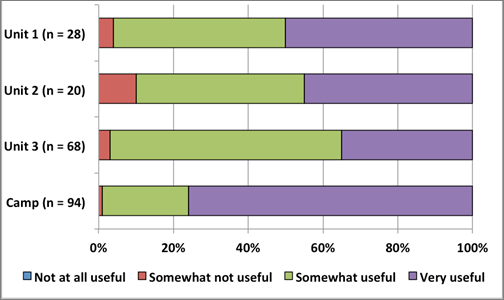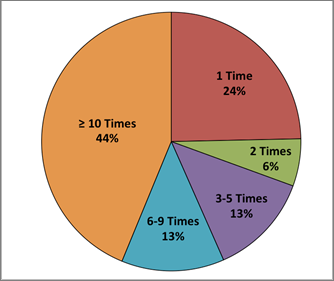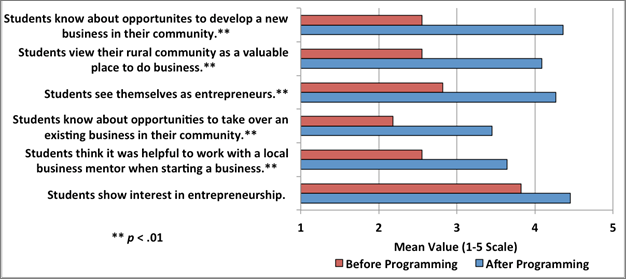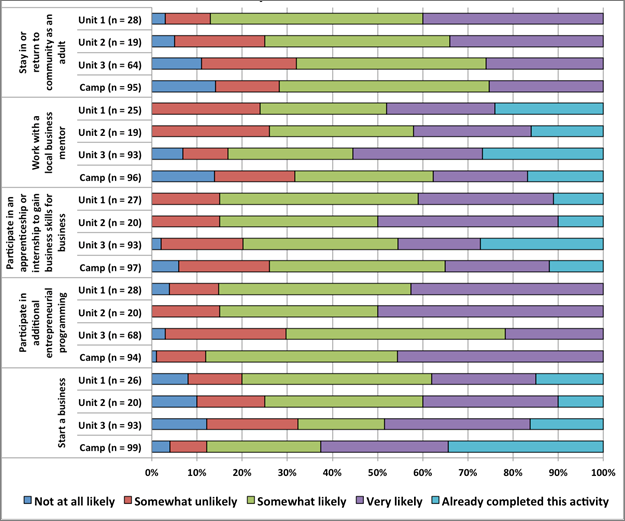 |
June 2017
|
June 2017 // Volume 55 // Number 3 // Ideas at Work // v55-3iw9
Beyond Lemonade Stands to Main Street Business Development: A Youth Entrepreneurship Curriculum
Abstract
Entrepreneurship is widely recognized as a driver of rural economic growth and community vitality. Nebraska Extension personnel developed a youth entrepreneurship curriculum—EntrepreneurShip Investigation (ESI)—for middle and high school students. This curriculum has been used at 4-H summer camps, for formal classroom and out-of-school instruction, and in additional educational environments. A preliminary survey of ESI program participants and educators showed positive entrepreneurship learning, attitudes toward business creation, and plans for further relevant educational pursuits. These results suggest that the ESI curriculum produces positive entrepreneurship outcomes for youths and identify the need for further research into the efficacy of the curriculum.
Introduction
Entrepreneurship and sustainable business creation are crucial to the economic vitality of all communities, especially those in rural locations. Business growth, including both new business creation and existing business expansion, can mitigate population outflow, wage inequality, and a shrinking tax base (Walzer, 2007). Rural entrepreneurs often face unique challenges beyond those encountered by urban business creators. Due to lower population densities, rural businesses are often further from customers and suppliers and experience difficulty attracting and retaining skilled workers and support services. As a result, entrepreneurship remains an important but challenging goal for sustaining rural communities (Besser & Miller, 2013).
Interest in entrepreneurship as a driver of economic growth has generated assorted entrepreneurship curricula for adults and youths. Education has been used to introduce transdisciplinary skills frequently employed in new business creation and to influence perceptions of careers in entrepreneurship. Although entrepreneurship education can be impactful at all ages, it can be particularly beneficial when delivered to youths because noncognitive entrepreneurship skills are best taught at an early age (Huber, Sloof, & Van Praag, 2014). Further, entrepreneurship education varies significantly on the basis of students' interests and educational objectives—there is no "one size fits all" approach (Bae, Qian, Miao, & Fiet, 2014). Accordingly, there is a need for youth-directed entrepreneurship curricula that can be adapted for local audiences and business conditions.
Program Description
EntrepreneurShip Investigation (ESI) is an entrepreneurship curriculum developed by Nebraska Extension and its partners. Designed for youths aged 10 to 19, ESI consists of three units. Discover the E-Scene (Unit 1) helps youths understand entrepreneurship and leads them in exploring extant entrepreneurship within their families and communities. Unit 1 has the additional option for students to assess their signature strengths through the Clifton Strengths Explorer tool. The Case of Me (Unit 2) has students explore their individual values, ethics, professionalism, and other noncognitive skills necessary for successful entrepreneurship careers. Your Business Inspection (Unit 3) walks students through the nuts and bolts of developing a business and marketing plan. Each unit covers material aimed at increasing students' knowledge and entrepreneurship skills. Units can be used together or separately, depending on educational objectives and available time.
The ESI curriculum can be taught in classrooms or as an out-of-school or summer camp program. Since its inception in 2008, it has been taught in 48 states and at least eight countries. It has been used by 4-H clubs and youth and community organizations, and in state fair competitions. It also has been integrated into middle and high schools as a formal classroom curriculum (University of Nebraska–Lincoln Institute of Agriculture and Natural Resources, n.d.). In 2015, 1,229 students received over 20,500 hr of ESI instruction. All units of the curriculum, including an educator's guide, are available for purchase online.
Evaluation of the ESI Curriculum
We conducted a limited study to preliminarily understand the impact of the ESI curriculum and determine whether more comprehensive research was justified. The University of Nebraska Bureau of Sociological Research provided an external evaluation of the curriculum. We conducted focus group sessions with ESI teachers and with students from multiple locations. Teachers were asked about topics related to ESI programming, including setting, student interest, and perceived curriculum utility. Students were asked about content learned and attitudes toward careers in entrepreneurship. Focus group data provided insight regarding implementation of the curriculum and were used to develop survey instruments for further assessment.
Next, survey instruments for both students and teachers were created and distributed with educational materials in print form. The surveys included questions related to participant response to the curriculum, self-assessment of entrepreneurship skills, and intent for future entrepreneurial actions. For some questions, we wanted to measure participant changes resultant from instruction and used a retrospective "post-then-pre" format to maximize response rate and data consistency. After responses were mailed back to us, we sorted responses by curriculum unit and analyzed them to evaluate curriculum efficacy.
Results and Discussion
Students were asked to rate the usefulness of curriculum received by curriculum unit and, as applicable, a curriculum used at camp that included content from multiple units. For all categories, more than 90% of students found the curriculum somewhat or very useful (Figure 1).
Figure 1.
Student Perceptions of Curriculum Usefulness

To further evaluate perceived utility, we included a question on the teacher survey asking teachers how many times they taught ESI (assuming that teachers repeat only programming that they believe to be beneficial). Seventy-five percent of teachers surveyed had taught ESI more than once, with 57% having used the curriculum more than five times (Figure 2). Thus, our results confirmed that ESI was well received by students and teachers.
Figure 2.
Numbers of Times Teachers Used ESI Curriculum (n = 16)

Students also were asked to assess their entrepreneurship knowledge and perceptions before and after instruction. They responded to statements using a 5-point scale with the response options 1 = definitely no, 2 = no, 3 = maybe, 4 = yes, 5 = definitely yes. Their responses to nearly all survey questions indicated statistically significant (p < .05) improvements (Figure 3).
Figure 3.
Student Self-Assessment of Competencies

To further validate student responses, we also surveyed teachers regarding their students' knowledge and perceptions on similar topics (Figure 4). Once again, responses to nearly all questions indicated statistically significant improvements.
Figure 4.
Teacher Assessment of Students' Competencies (n = 11)

Finally, students were asked their likelihood of taking future action related to entrepreneurship (Figure 5). A majority planned to pursue further programming, mentorships, and internships to gain additional entrepreneurship competencies. According to Kantor (2012), youths' developing relationships with community members and exploring local business opportunities may lead to increased business creation. When asked about starting a business, about 77% of respondents indicated that they planned to start a business or had already done so. When compared to results from Thompson and Walstad (2008), which indicated that 69% of young adults (aged 18–29) in Nebraska were interested in starting a business, this finding suggests that the curriculum can increase the likelihood of future entrepreneurial actions.
Figure 5.
Participants' Intentions Related to Entrepreneurship

Conclusion
ESI introduces entrepreneurship to youths aged 10 to 19 and has been successfully implemented in formal and informal educational settings. Preliminary survey data collected from students and teachers show positive learning of entrepreneurship skills and increased intentions for further entrepreneurship education and career pursuits. These findings indicate that the ESI curriculum may be effective for promoting community entrepreneurship and that communities that provide entrepreneurship education might ultimately see business creation by student participants. However, additional research is needed to comprehensively evaluate the link between entrepreneurial intentions and future entrepreneurial actions.
References
Bae, T. J., Qian, S., Miao, C., & Fiet, J. O. (2014). The relationship between entrepreneurship education and entrepreneurial intentions: A meta-analytic review. Entrepreneurship Theory and Practice, 38(2), 217–254.
Besser, T. L., & Miller, N. J. (2013). Community matters: Successful entrepreneurship in remote rural US locations. The International Journal of Entrepreneurship and Innovation, 14(1), 15–27.
Huber, L. R., Sloof, R., & Van Praag, M. (2014). The effect of early entrepreneurship education: Evidence from a field experiment. European Economic Review, 72, 76–97.
Kantor, D. (2012). Jump for the clouds: An innovative strategy connecting youth to communities. Journal of Extension, 50(2), Article 2TOT4. Available at: https://www.joe.org/joe/2012april/tt4.php
Thompson, E. C., & Walstad, W. B. (2008). Entrepreneurship in Nebraska: Conditions, attitudes, and actions. New York, NY: Gallup Press.
University of Nebraska–Lincoln Institute of Agriculture and Natural Resources. (n.d.). ESI: EntrepreneurShip Investigation. Retrieved January 4, 2016, from http://esi.unl.edu/
Walzer, N. (Ed.). (2007). Entrepreneurship and local economic development. Lanham, MD: Lexington Books.




